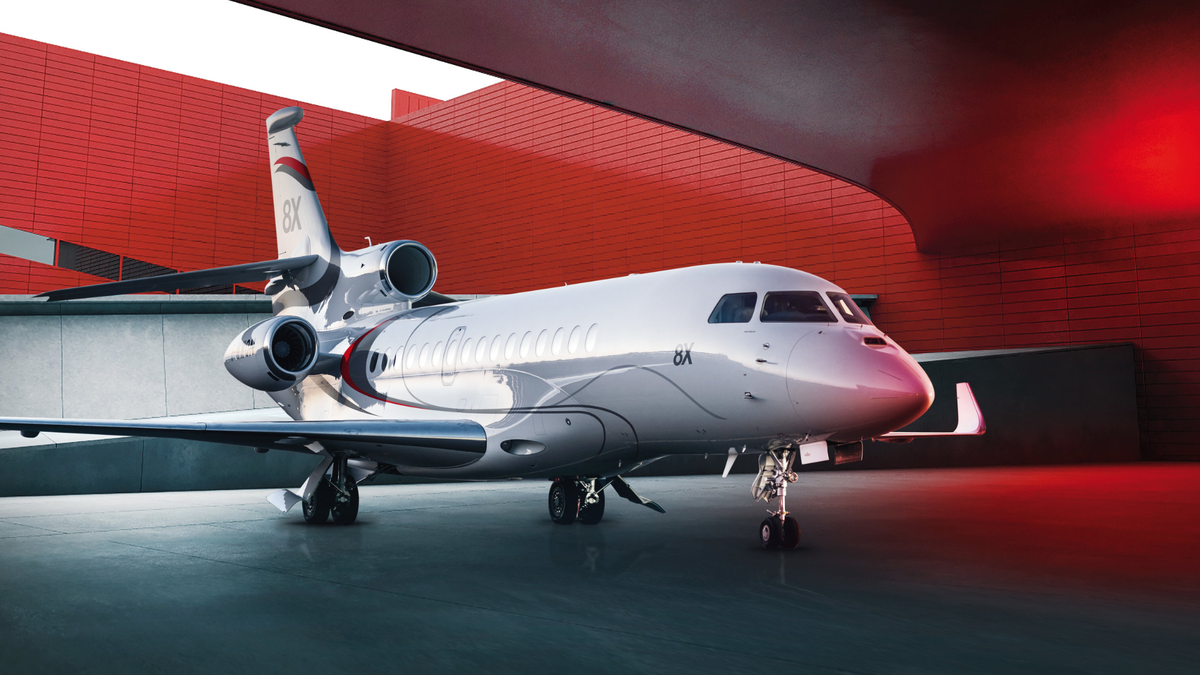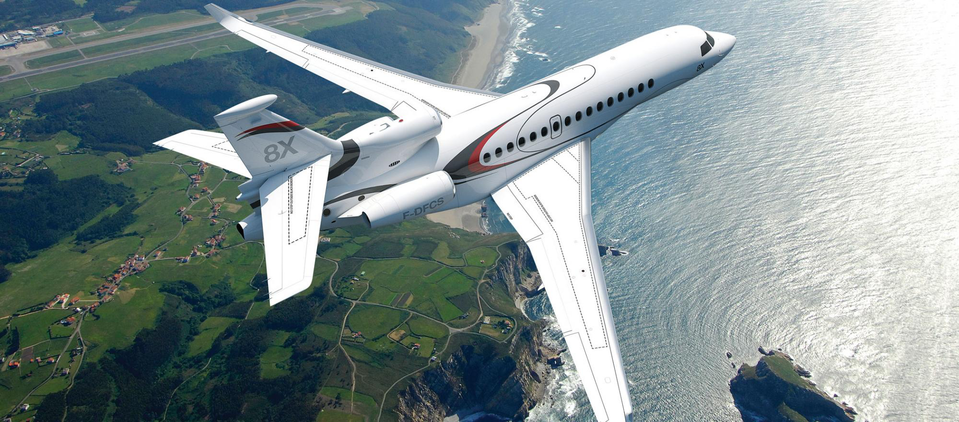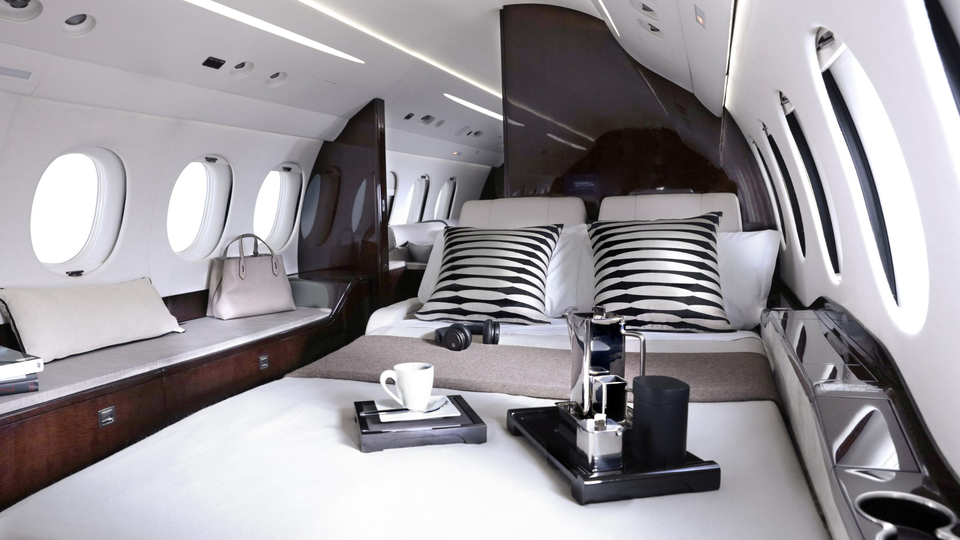Luxury-jet buzz swirls as Dassault preps new Falcon
Dassault's newest flagship Falcon corporate jet aims to swoop on rival Gulfstream's Global 7500 and G700.

Dassault is poised to announce its largest-ever Falcon corporate jet this week, stepping up a push to compete toe-to-toe with the swankiest offerings from Bombardier and Gulfstream.
While Dassault has kept a tight lid on details, the industry is already abuzz with speculation that the plane will match or surpass rival jets in size, speed and range.
Chief Executive Officer Eric Trappier, playing catch-up after an engine problem with another aircraft delayed new products, has touted the “future Falcon” on conference calls without providing specifics.
The Paris-based jetmaker, which is partially owned by Airbus and also makes military aircraft such as the Rafale and the Eurofighter Typhoon, plans to formally unveil its latest plane in a mostly virtual event on May 6.
“It’s going to be the biggest Falcon jet ever,” said Rolland Vincent, an aircraft consultant in Plano, Texas, who predicts deliveries of the aircraft will begin in 2025. “It’s going to compete at the very top of the pyramid.”
Dassault’s plan heralds a bigger battle at the high end of the corporate-jet market, which had been growing quickly before the coronavirus pandemic as well-heeled customers flew further and more often for international business trips.
Manufacturers responded with models that are larger, faster, more comfortable – and pricier. Bombardier’s Global 7500, which can be configured with a bedroom and shower, lists at US$75 million before customary discounts.
The pandemic, which curtailed international travel, has cut the world’s appetite for new aircraft and caused private-jet shipments to fall 22% to 564 last year. It will take the industry until 2025 to recover, according to Honeywell International Inc., which supplies engines, cockpit controls and other parts.
Recently, demand has been strong for smaller, pre-owned planes. But large jets will again dominate the market. Honeywell’s survey of more than 1,000 private-jet operators showed that over the next decade, purchases of large aircraft will account for 42% of deliveries and 69% of market value.
Race to the top
Dassault isn’t waiting for a full rebound. It’s betting well-heeled clients who purchase the jet equivalent of a superluxury Bugatti sports car aren’t likely to be fazed by short-term downturns in the global business cycle. Opulence aside, manufacturers say corporate aircraft are tools that save time for CEOs and other executives.
New aircraft introductions are the lifeblood of sales for business-jet makers since design improvements entice high-dollar customers.
Bombardier’s Global 7500, which debuted in December 2018, now holds the crown as the largest purpose-built business aircraft, surpassed only by corporate-jet versions of airliners made by Airbus and Boeing.
Not to be outdone, Gulfstream, a division of General Dynamics, is building the G700. Deliveries of that plane are scheduled to start in 2022 and will replace the G650, which competes now with the Bombardier aircraft, as Gulfstream’s flagship jet.
Business planes are made specially for corporate travel, with more speed, lower operating costs and cabin pressure that’s closer to what a passenger feels on the ground.
Dassault fell behind Bombardier and Gulfstream after scrapping the Falcon 5X aircraft, which was initially supposed to begin deliveries in 2017.
When Safran stumbled in the development of a new engine design, Dassault switched to Pratt & Whitney, a division of Raytheon Technologies Corp. Pratt already supplies engines for Dassault’s two largest Falcon jets.
The 5X, which boasts the tallest cabin of any corporate jet at 6 feet, six inches, was repackaged as the 6X and deliveries are expected to begin at the end of next year. But the delays on that program rippled through to plans for the biggest Falcon, and the announcement of the new plane was further delayed last year by the pandemic.
Dassault’s new aircraft will likely have an interior that’s similar in size to the 6X, and there’s speculation that Dassault will use that same cabin platform. The jet will probably be able to use biofuels while offering other features to mitigate emissions, said Vincent, the Texas consultant.
Investment push
The new Falcon probably isn’t just a stretch version of the 6X, given the company’s 2021 research and development budget of US$600 million. That’s twice the level in 2016 and 2017, before the company started investing heavily in the 6X.
This year, most of the spending will probably be on the new aircraft because the 6X is well along in its development, said Yan Derocles, an analyst with Oddo.
“The R&D is quite significant,” Derocles said. “So, I’m more basing this on a brand new aircraft, not using or stretching the 6X fuselage.”
This article is published under license from Bloomberg Media: the original article can be viewed here

